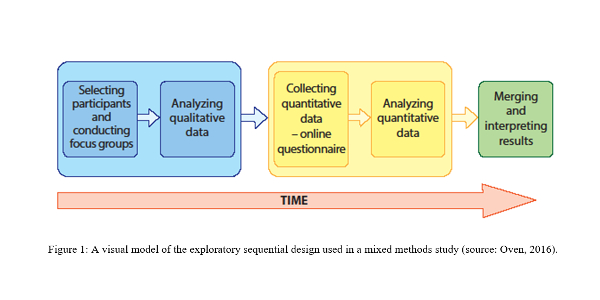Mixed methods research is becoming an increasingly popular methodology, especially in social and human sciences. It refers to combining both quantitative and qualitative approaches to answer your research question. In this article, we will present the definition of mixed methods research and some of the main reasons for using it. We will also look at different mixed methods designs and discuss a practical example of a mixed methods study.
What is Mixed Methods Research (And What It Is Not)
The basic idea in mixed methods research is that we want to use quantitative and qualitative methods together to get a complete understanding of the phenomenon we are studying. Researchers using this approach collect, analyze and combine qualitative and quantitative data into a single study. They usually have two databases that, at some stage, they bring together and integrate. In other words, in a mixed methods approach, we combine together the power of quantitative data (“the numbers”) with qualitative data to give our findings better context.
If you are only looking to transform qualitative data into quantitative, this is not considered a mixed methods approach. Also, if you are keeping your (qualitative and quantitative) databases separate and/or you are only adding qualitative data into an experiment, you are not conducting a mixed methods study. Basically, you should be inclined to choose a mixed methods approach when quantitative or qualitative data alone are not sufficient to fully understand your research question.
When Should You Use Mixed Methods?
John Creswell from the University of Nebraska, who is recognized for his mixed methods research in the field of education, states that your rationale for using mixed methods can include:
- The need for different, multiple perspectives.
- The need to confirm quantitative measures with qualitative experience.
- The need to explain quantitative results.
- The need to better contextualize instruments, measures or interventions.
- The need to gather trend data and individual perspectives.
Researchers often use mixed methods when they want to explain their statistical data (or enhance their experiments) by talking to people and seeing if their quantitative and qualitative data confirm the same findings. Another applications of this research approach are people who want to explore opinions and beliefs of a population/group of people before developing and/or administering a new assessment tool.
As a good researcher, you need to choose your method based on the problem you are trying to study and/or your research question. Although mixed methods research is currently trendy, it might not be the right fit for your project. You should also consider some other factors, such as the time available for your research, your current finances, as well as the needed skill sets to use mixed methods effectively.
Different Mixed Methods Designs
Basic mixed methods designs include convergent design, explanatory sequential design and exploratory sequential design.
- In a convergent design, qualitative and quantitative data are collected in parallel, analyzed separately and then merged. As researchers, we usually want to see if our quantitative and qualitative data converge in a meaningful way.
- Explanatory design starts with quantitative data collection and analysis. After we obtain our quantitative results, qualitative data collection and analysis then takes place. Qualitative data are used to help to explain quantitative results.
- In contrast, exploratory design begins with the qualitative phase, followed by quantitative data collection and analysis. When using exploratory design, we are usually trying to see if our quantitative data can generalize our qualitative findings.
You are not limited to these three types. On the contrary, you can build on these basic designs and develop a more advanced mixed methods study design, such as intervention design, transformative design or multiphase design.
Example of a Mixed Methods Study (Exploratory Sequential Design)
To get a better grasp of this methodology, let me briefly present a study that used exploratory sequential design. This study, conducted by Dr. Alenka Oven and Dr. Bojana Lobe, explored the creativity of occupational therapists. The initial qualitative exploratory phase used focus group interviews to gather data on how creativity was perceived by occupational therapists. The categories that emerged from the qualitative analysis were used to develop a novel quantitative questionnaire on creativity. This questionnaire was then distributed online among occupational therapists to gather quantitative data. At the end of data gathering, the results of both phases were merged to interpret the findings. The qualitative study captured individual views, perceptions and feelings about the creativity of a small group of occupational therapists, whereas the quantitative study included a bigger sample and aimed to check whether views from a larger sample corresponded with the information gathered during the focus group interviews. Furthermore, qualitative findings helped to interpret the findings of the quantitative phase and gave the study a richer context.
Sources and Further Reading
Creswell, J.W. (2013). Steps in Conducting a Scholarly Mixed Methods Study. DBER Speaker Series. 48.
Oven, A. (2016). The influence of the uniqueness of a case on the creativity of the occupational therapist. Doctoral dissertation, University of Ljubljana, Slovenia.
Oven, A. & Lobe, B. (submitted). Creative Occupational Therapist: It’s About the Client Using Focus Groups to Explore Creativity in Occupational Therapy. Journal of Creative Behavior.
